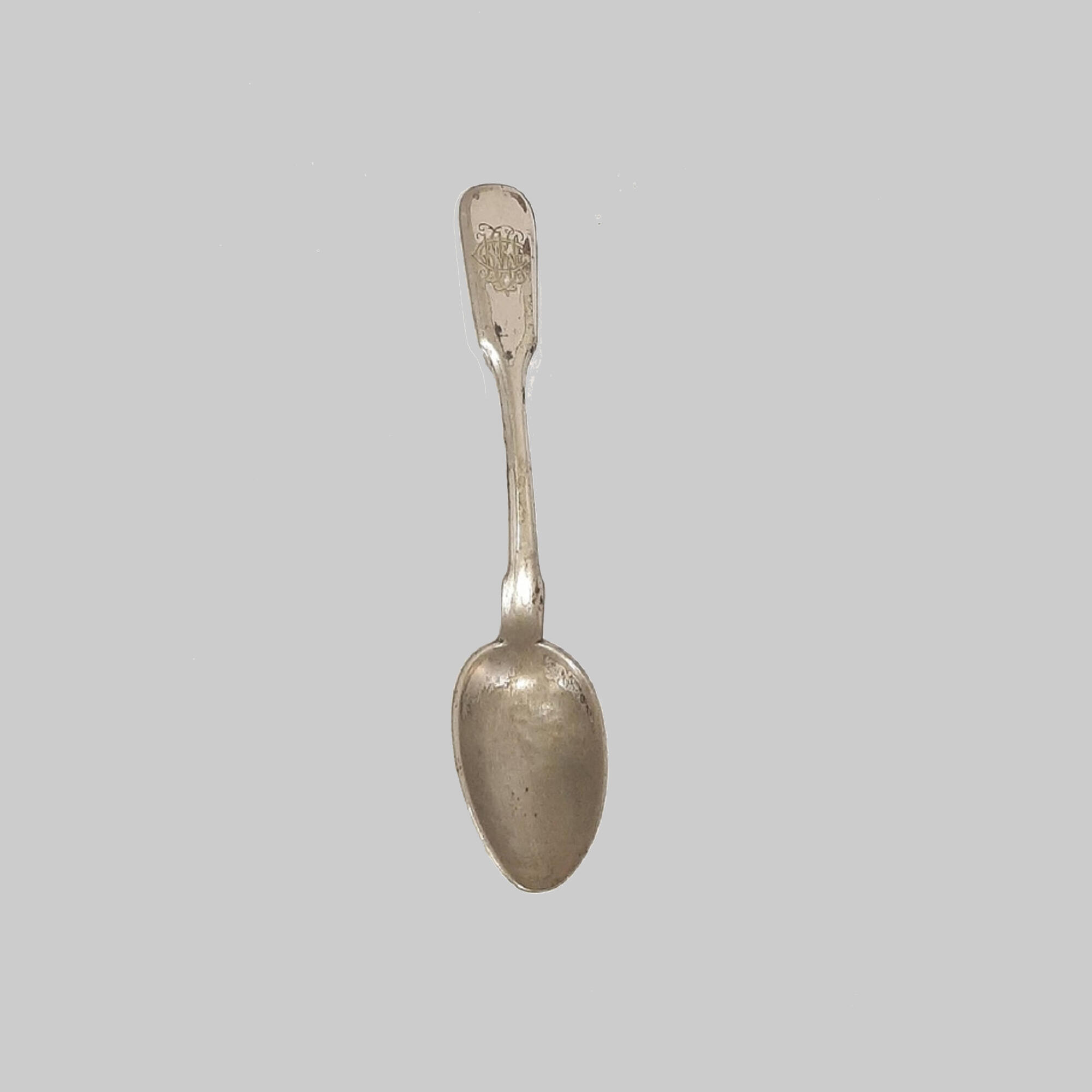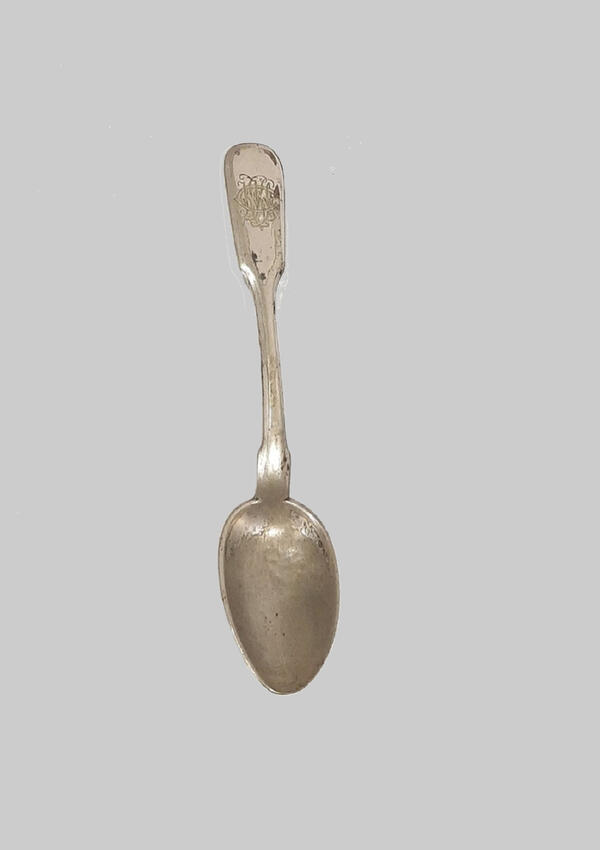The teaspoon with the pattern and engraving ‘1907’ was made in Warsaw by the famous factory of Joseph Fraget. It is made of a silver-plated metal alloy. Part of the silver layer is erased.
In 1824, two French jeweler brothers, Alphonse and Joseph Fraget, arrived in Warsaw to set up a company specializing in the production of inexpensive silver-coated items. It was planned to produce cutlery, dishes, utensils, candlesticks, and censers. The products that the Fraget company began to produce were similar to silver, although in fact they were silver-plated copper. The silver layer was thin, i.e. about 20 microns.
In that part of Europe, this silvering technology was new. These products could be available to a wider range of people than silverware and other household items made of precious metals. For this reason, the products immediately became a success. The method of silvering used by the Fraget brothers looked something like this. A thin sheet of silver foil was superimposed on red-hot copper and rolled. This product was called clad, and later it was called silver overlay.
At that time, Warsaw was the capital of the Kingdom of Poland, which was part of the Russian Empire. By decree of the Russian Tsar, newly created firms in the Kingdom of Poland received subsidies and the opportunity to sell goods throughout the empire without duty. The factory quickly gained popularity, and Fraget products were in demand. Already in 1830, they won the first award, i.e. a silver medal at the exhibition in Paris. In the early forties, the company received a new name, ‘JOSEPH FRAGET’. The younger brother Joseph became its head.
In 1847, Joseph traveled to Europe and studied silver plating technology. Then he got acquainted with electroplating. The advantage of this method is that not only copper, but also brass, zinc, nickel, and their alloys are suitable for electroplating silver. After his return, Joseph decided to completely rebuild his factory and introduce the electroplating method into production. In 1857, production expanded again. There was a machine for automatic production of cutlery. The factory’s products became so popular that the word “Fraget” was used to refer to any silver-plated product.
On the presented product, one can see the image of the Coat of Arms of the Russian Empire. The factory received permission to use the state emblem on its products in 1896 when it won a gold medal at the exhibition in Nizhny Novgorod. At that time, the double-headed eagle sign meant high-quality products.
By the end of the 19th century, the company received a number of the most prestigious awards at international exhibitions in Europe.
Before the World War I, the company continued to develop and increase production. However, after the declaration of independence of Poland, its affairs become somewhat worse due to the loss of the huge market of the Russian Empire. And during the occupation of Poland, the company temporarily stopped its work and was restored after the war, but became state-owned.
In 1824, two French jeweler brothers, Alphonse and Joseph Fraget, arrived in Warsaw to set up a company specializing in the production of inexpensive silver-coated items. It was planned to produce cutlery, dishes, utensils, candlesticks, and censers. The products that the Fraget company began to produce were similar to silver, although in fact they were silver-plated copper. The silver layer was thin, i.e. about 20 microns.
In that part of Europe, this silvering technology was new. These products could be available to a wider range of people than silverware and other household items made of precious metals. For this reason, the products immediately became a success. The method of silvering used by the Fraget brothers looked something like this. A thin sheet of silver foil was superimposed on red-hot copper and rolled. This product was called clad, and later it was called silver overlay.
At that time, Warsaw was the capital of the Kingdom of Poland, which was part of the Russian Empire. By decree of the Russian Tsar, newly created firms in the Kingdom of Poland received subsidies and the opportunity to sell goods throughout the empire without duty. The factory quickly gained popularity, and Fraget products were in demand. Already in 1830, they won the first award, i.e. a silver medal at the exhibition in Paris. In the early forties, the company received a new name, ‘JOSEPH FRAGET’. The younger brother Joseph became its head.
In 1847, Joseph traveled to Europe and studied silver plating technology. Then he got acquainted with electroplating. The advantage of this method is that not only copper, but also brass, zinc, nickel, and their alloys are suitable for electroplating silver. After his return, Joseph decided to completely rebuild his factory and introduce the electroplating method into production. In 1857, production expanded again. There was a machine for automatic production of cutlery. The factory’s products became so popular that the word “Fraget” was used to refer to any silver-plated product.
On the presented product, one can see the image of the Coat of Arms of the Russian Empire. The factory received permission to use the state emblem on its products in 1896 when it won a gold medal at the exhibition in Nizhny Novgorod. At that time, the double-headed eagle sign meant high-quality products.
By the end of the 19th century, the company received a number of the most prestigious awards at international exhibitions in Europe.
Before the World War I, the company continued to develop and increase production. However, after the declaration of independence of Poland, its affairs become somewhat worse due to the loss of the huge market of the Russian Empire. And during the occupation of Poland, the company temporarily stopped its work and was restored after the war, but became state-owned.



